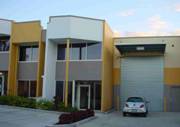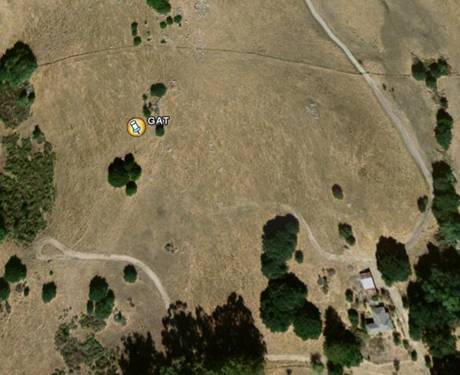

|
GTSM at San Francisco East Bay |

GARIN - GAT
Gauge angles 1. 173.3 E of N 2. 113.3 E of N 3. 53.3 E of N 4. 23.3 E of N
Raw, exponential models, and residual plots for each measured channel are shown for gauge 1, gauge 2, gauge 3, and for gauge 4.
Note that the gauge residuals have a Y axis scale range of +/- 4 microstrain for each component, and show that excluding known tectonic events, all variation in gauge strain rates have been less than +/- 0.1 microstrain per year for the whole of the 6 year record,(1992 - 1998).
The residual linear borehole recovery strain rate over the total record is shown in microstrain/year as the "slope" on each plot.
Residual data are recovered from the raw data by extracting least squares fitted exponential(s) and a linear function which describe the processes of curing of the grout and recovery of the borehole, after drilling and installation disturbance of the virgin stress field.
Regions used in the least squares fitting are marked in red on the X axis, and the fit parameters are printed in the upper panel of the figure and are also tabulated elsewhere.
In August 2003, the borehole recovery exponentials were updated from values determined in the early 1990's to incorporate the additional years of data length now available. Changes of strain rates calculated from these residuals are unaffected by the exponential removal procedure and allow the very long term stability(see gauge 1 , gauge 2, gauge 3,and gauge 4) of the instruments to be quantified.
HISTORY During deployment of this instrument, the deployment cable was damaged approximately 30 meters from the surface by failure of a manually controlled guide pulley. A field repair was undertaken because only one target horizon was available below the casing. By May 6, 1994, fluid leakage into the cable was detected. Several attempts were made over the years to 1998 to control copper conductor corrosion, but in September 1998, complete failure of several conductors resulted in loss of downhole contact. This is one of only two GTSM instruments on grid power, and the long sections of missing data initially, were due to delays in connection to the grid, and temporary availability of solar power.
This station was taken off-line on September 2 1998.
These instruments provide strain data on Long term strain accumulation. Data records are available from the East Bay sites near the Hayward fault, GAT and CHT from 1993. Tilt records are also available from the Gladwin Tensor instrument at GAT and CHT from 1993. Medium term strain changes associated with earthquake activity and other fault processes. Coseismic strain offsets useful for constraining earthquake source mechanisms.Data plots of interest in East Bay:· Feb 1996 Strain : event detail plot · April 27, 2000 Strain Tilt Creep: event detail plot with tilt measured on the GTSM on-board tiltmeter. · May 11 - 17, 2001 Strain Tilt Creep: event detail plot with tilt measured on the GTSM on-board tiltmeter. · June 1 - 2, 2001 Strain Tilt Creep: event detail plot with tilt measured on the GTSM on-board tiltmeter. · ALL data to May 2003 Strain Tilt : detail plot with tilt measured on the GTSM on-board tiltmeter. |

